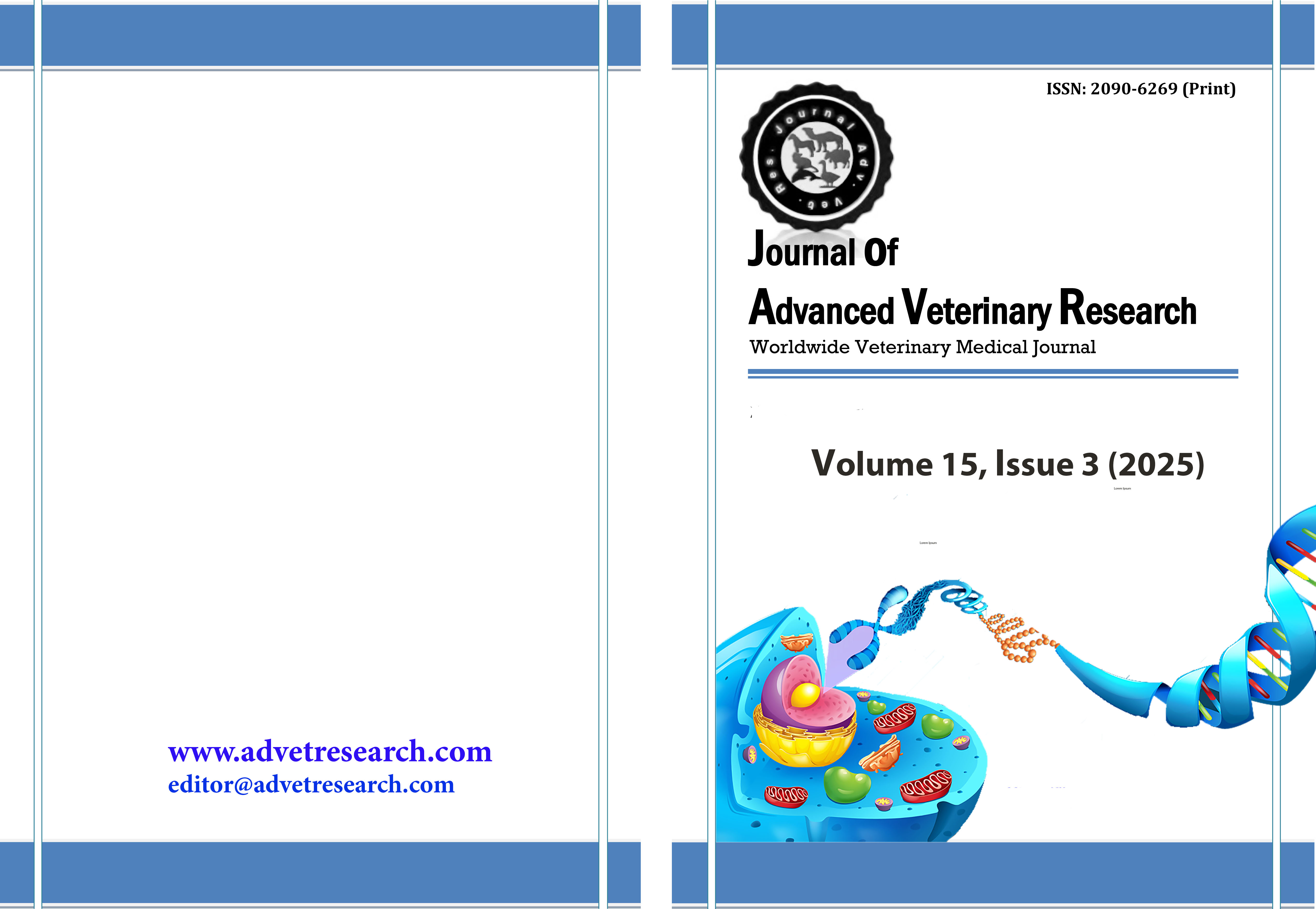Anthelmintic resistance in gastrointestinal nematodes of sheep and goats: A systematic review
Keywords:
anthelmintic resistance, gastrointestinal nematodes, control, mechanisms, small ruminantAbstract
Helminthosis caused by various parasitic nematodes, cestodes, and trematodes is especially important in small ruminant production due to loss of productivity and health challenges caused by infestations. The control of helminthosis in ruminants depends on various types of benzimidazole, macrocyclic lactone, and imidazothiazole anthelmintics. Unfortunately, prolonged indiscriminate use of these drugs has led to anthelmintic resistance (AR) in gastrointestinal nematodes (GINs) if ruminants. AR is a heritable loss of sensitivity of a parasite population to a previously effective anthelmintic. Understanding the mechanisms underlying AR is crucial for sustainable parasite management. This systematic review was conducted to answer the research question: “What is the prevalence, distribution, diagnosis, and molecular basis for anthelmintic resistance in gastrointestinal nematodes of small ruminants?” This paper attempts to present current knowledge on the occurrence, mechanisms, global situation, and diagnosis of anthelmintic resistance in Trichostrongyle nematodes of sheep and goats with reference to the situation in Malaysia. Eligible original research articles published between January 1, 1990, and April 30, 2024, from the Scopus and PubMed databases were retrieved and analyzed based on the Preferred Reporting Items for Systematic Reviews and Meta-Analyses (PRISMA). The results of the study showed that benzimidazole, macrocyclic lactone, and imidazothiazole resistance is rampant in 9 different species of gastrointestinal nematodes globally. Haemonchus, Trichostrongylus, and Teladorsagia are the most widely reported anthelmintic-resistant Trichostrongyles in small ruminants globally. In vivo FECRT is still the most widely used method for detecting anthelmintic resistance in sheep and goats. Key resistance markers include mutations in the β-tubulin gene for benzimidazole resistance, the acr-8 gene for imidazothiazole resistance, and increased P-glycoprotein (P-gp) expression for macrocyclic lactone resistance. Despite current research efforts, data is lacking on the molecular markers for resistance in many gastrointestinal nematode species and the resistance status of hydropyrimidines, requiring further studies in this area. Therefore, future studies need to focus on developing standardized molecular diagnostics for detecting resistance in prevalent pathogenic Trichostrongyles for more efficient tracking of resistance. Sustainable control using proper dosing of anthelmintics, rotation of anthelmintics, the refugia principle, and combination therapy can slow down the emergence of resistance in nematode populations.
Downloads
Published
How to Cite
Issue
Section
License
Copyright (c) 2025 Journal of Advanced Veterinary Research

This work is licensed under a Creative Commons Attribution-NonCommercial-NoDerivatives 4.0 International License.
Users have the right to read, download, copy, distribute, print, search, or link to the full texts of articles under the following conditions: Creative Commons Attribution-NonCommercial-NoDerivatives 4.0 International (CC BY-NC-ND 4.0).
Attribution-NonCommercial-NoDerivs
CC BY-NC-ND
This work is licensed under a Creative Commons Attribution-NonCommercial-NoDerivatives 4.0 International (CC BY-NC-ND 4.0) license




